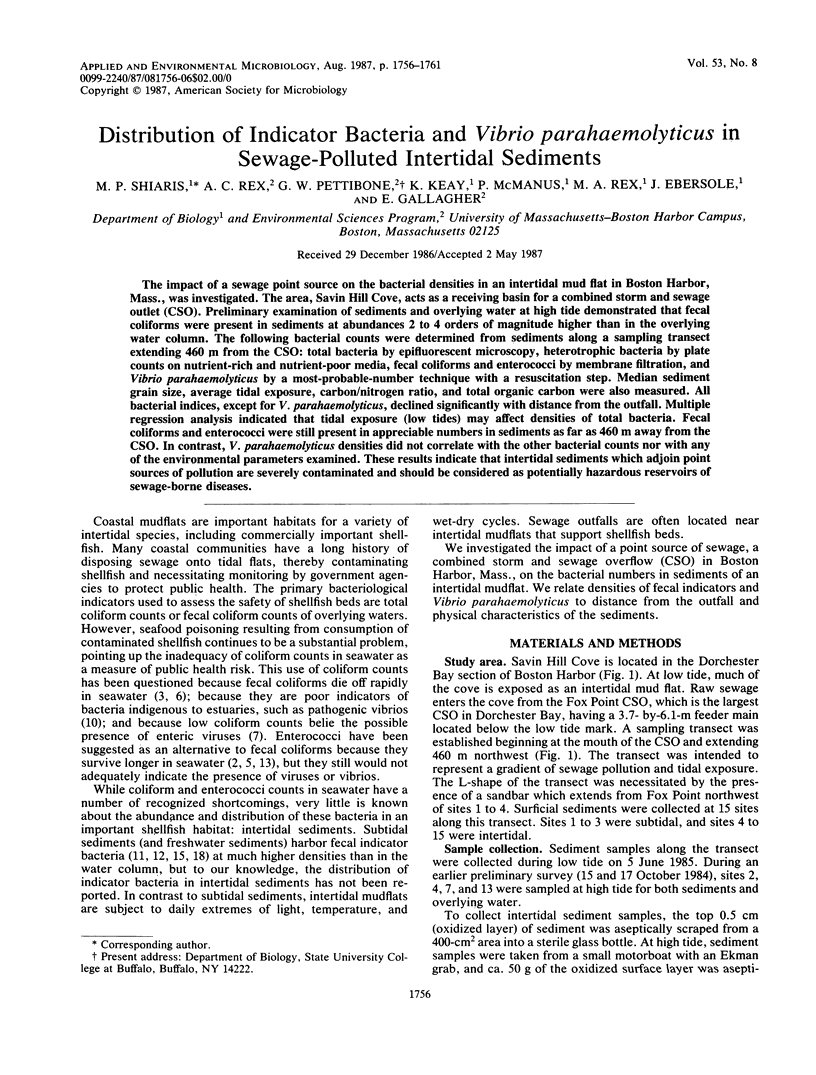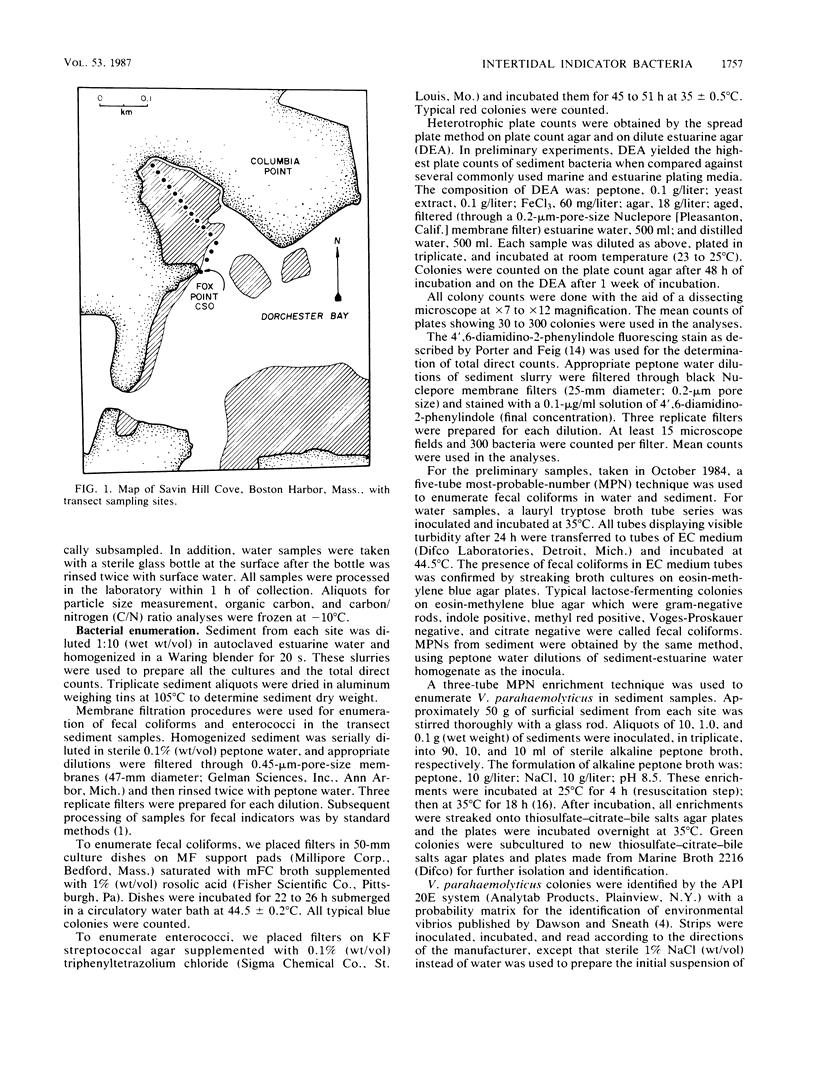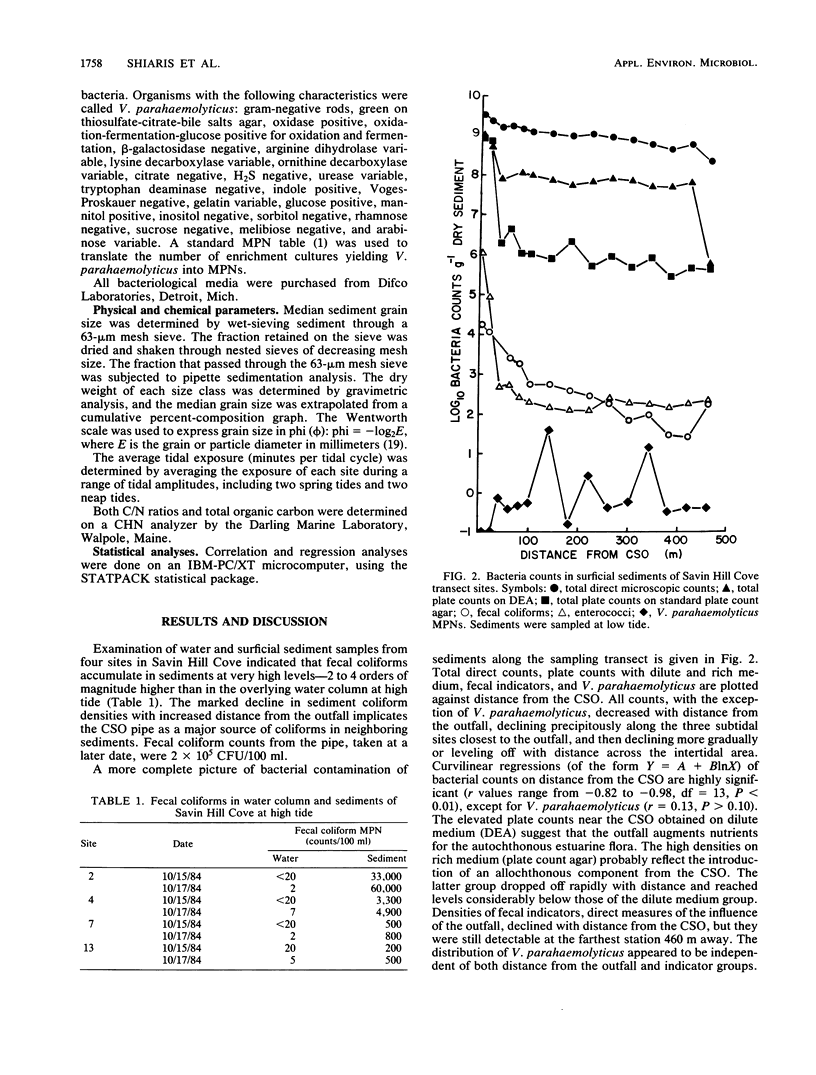Abstract
The impact of a sewage point source on the bacterial densities in an intertidal mud flat in Boston Harbor, Mass., was investigated. The area, Savin Hill Cove, acts as a receiving basin for a combined storm and sewage outlet (CSO). Preliminary examination of sediments and overlying water at high tide demonstrated that fecal coliforms were present in sediments at abundances 2 to 4 orders of magnitude higher than in the overlying water column. The following bacterial counts were determined from sediments along a sampling transect extending 460 m from the CSO: total bacteria by epifluorescent microscopy, heterotrophic bacteria by plate counts on nutrient-rich and nutrient-poor media, fecal coliforms and enterococci by membrane filtration, and Vibrio parahaemolyticus by a most-probable-number technique with a resuscitation step. Median sediment grain size, average tidal exposure, carbon/nitrogen ratio, and total organic carbon were also measured. All bacterial indices, except for V. parahaemolyticus, declined significantly with distance from the outfall. Multiple regression analysis indicated that tidal exposure (low tides) may affect densities of total bacteria. Fecal coliforms and enterococci were still present in appreciable numbers in sediments as far as 460 m away from the CSO. In contrast, V. parahaemolyticus densities did not correlate with the other bacterial counts nor with any of the environmental parameters examined. These results indicate that intertidal sediments which adjoin point sources of pollution are severely contaminated and should be considered as potentially hazardous reservoirs of sewage-borne diseases.
Full text
PDF





Selected References
These references are in PubMed. This may not be the complete list of references from this article.
- CARLUCCI A. F., PRAMER D. An evaluation of factors affecting the survival of Escherichia coli in sea water. II. Salinity, pH, and nutrients. Appl Microbiol. 1960 Jul;8:247–250. doi: 10.1128/am.8.4.247-250.1960. [DOI] [PMC free article] [PubMed] [Google Scholar]
- Dawson C. A., Sneath P. H. A probability matrix for the identification of vibrios. J Appl Bacteriol. 1985 Apr;58(4):407–423. doi: 10.1111/j.1365-2672.1985.tb01480.x. [DOI] [PubMed] [Google Scholar]
- Grimes D. J. Bacteriological water quality effects of hydraulically dredging contaminated upper Mississippi River bottom sediment. Appl Environ Microbiol. 1980 Apr;39(4):782–789. doi: 10.1128/aem.39.4.782-789.1980. [DOI] [PMC free article] [PubMed] [Google Scholar]
- Grimes D. J. Release of sediment-bound fecal coliforms by dredging. Appl Microbiol. 1975 Jan;29(1):109–111. doi: 10.1128/am.29.1.109-111.1975. [DOI] [PMC free article] [PubMed] [Google Scholar]
- Joseph S. W., Colwell R. R., Kaper J. B. Vibrio parahaemolyticus and related halophilic Vibrios. Crit Rev Microbiol. 1982;10(1):77–124. doi: 10.3109/10408418209113506. [DOI] [PubMed] [Google Scholar]
- LaLiberte P., Grimes D. J. Survival of Escherichia coli in lake bottom sediment. Appl Environ Microbiol. 1982 Mar;43(3):623–628. doi: 10.1128/aem.43.3.623-628.1982. [DOI] [PMC free article] [PubMed] [Google Scholar]
- Matson E. A., Hornor S. G., Buck J. D. Pollution indicators and other microorganisms in river sediment. J Water Pollut Control Fed. 1978 Jan;50(1):13–19. [PubMed] [Google Scholar]


